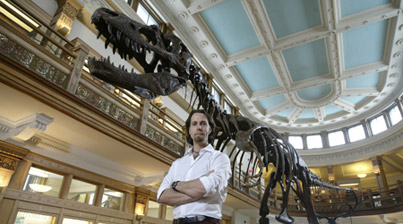Headliners: From bald-faced lies to long-tailed chickens
Headliners: From bald-faced lies to long-tailed chickens McGill University
User Tools (skip):
HEADLINERS
From bald-faced lies to long-tailed chickens

TALWAR: The truth about lies
Liar, liar, pants on fire
New York Magazine recently ran a lengthy article on children who lie that prominently featured educational and counselling psychology professor Victoria Talwar. A leading expert on children's behaviour, Talwar said that lying is related to intelligence, and that the smarter the child, the sooner they will be able to recognize the truth and conceive an alternate reality for it — cognitive skills that mark "a developmental milestone." She also maintained that many children learn how to lie from their parents. "They see us tell the telemarketer, 'I'm just a guest here.'" She said. "They see us boast and lie to smooth social relationships."
Buddy, can you spare a kidney?
Disturbingly, news items about organ selling seem to be on the increase. Recently, the Toronto Star ran an article that explored how various religions viewed the selling of an organ. While many religious traditions support organ donations that assist others, not all condone the practice. This is especially true when there is financial gain to be made. Religious studies prof. Victor Hori said that in Confucianism, for example, there is the tradition of "filial piety" in which individuals must care for what has been bequeathed to them by their parents and ancestors, including one's body, which must remain intact.
Then there was the Canadian Press item about a Quebec man who was trying to sell his diseased pancreas over the Internet. The original price tag was a whopping $1.5 million, but when interested buyers failed to materialize, the price dipped to $75,000. While the seller claimed he's hoping to increase research on nesidioblastosis, a rare affliction that can cause brain damage or even death, the hefty price tag has left many skeptical. "We don't want to head toward a society where you can offer your organs to the highest bidder," said Pierre Deschamps, a law professor specializing in biomedical ethics.
Why did the Archaeopteryx cross the road?

LARSSON: DevEvo guru
Hans Larsson was featured in a documentary on evolutionary development (or "EvoDevo," for short) called Dinosaurs: Return to Life that recently aired on the Discovery Channel. Larsson, the Canada Research Chair in Vertebrate Palaeontology, discussed his on-going research on how long-tailed dinosaurs evolved into short-tailed birds over the past 150 million years. Particularly intriguing is Larsson's work with chicken embryos which show a number of characteristics (such as a long tail) similar to the Archaeopteryx — considered to be the transitional animal between dinosaurs and birds.

